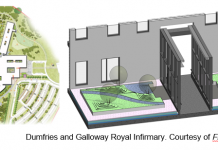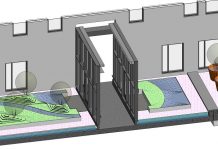The Landscape Institute has published a book focusing on the implementation of BIM in landscape
‘BIM for Landscape’ is the first book focusing on the implementation of BIM processes in the external environment.
Produced by the Landscape Institute, it is hoped it will inform the sector of the practice of simulation and prototyping in landscape architecture. This will save money and lead to better designs.
The book, according to the Landscape Institute, will highlight key BIM documents—often referred to as the pillars of BIM—and outline what needs to be considered to become BIM compliant. The aim is to prepare practitioners to meet challenges and to reap the benefits of utilising BIM.
It covers three sections: Introduction and how to prepare for BIM; BIM Implementation and technological aspects of BIM.
The Landscape Institute BIM working group chair Mike Shilton said: “By publishing ‘BIM for Landscape’, the Landscape Institute is trying to help landscape architecture practices make an informed business decision as to whether they should adopt BIM or not.
“Many practices may seek a competitive edge by proactively implementing BIM but for others, they will need to review whether this is relevant to them. Hopefully, the book will help their decision making process.
“Conversion to BIM enabled platforms from current practices may incur additional expenses and training but if a competitor is delivering projects more efficiently, on time and to budget by implementing BIM processes, and clients’ are achieving the targeted 20 per cent savings BIM can deliver, it may become more difficult for you to compete.”
Noel Farrer, president of the Landscape Institute, said: “This book is timely and demonstrates the landscape profession’s leadership in the field. It will be a helpful resource, not only for landscape practitioners but also for fellow professional in related fields starting to understand the application of BIM to landscape works.
“This will provide an invaluable early guide to elements of good practice.”










